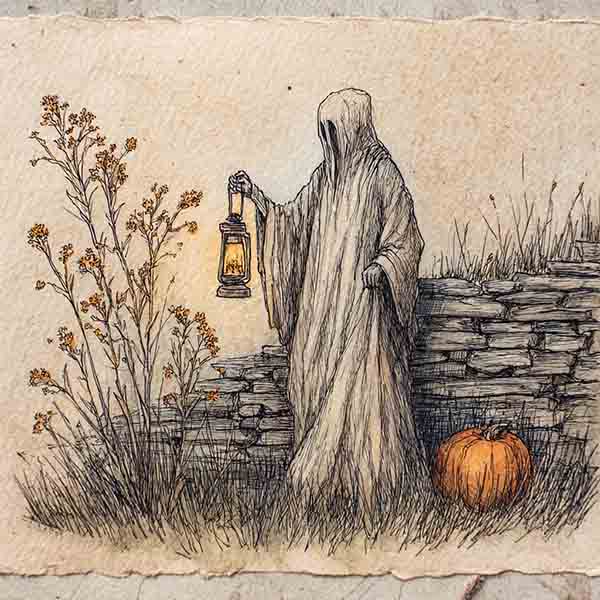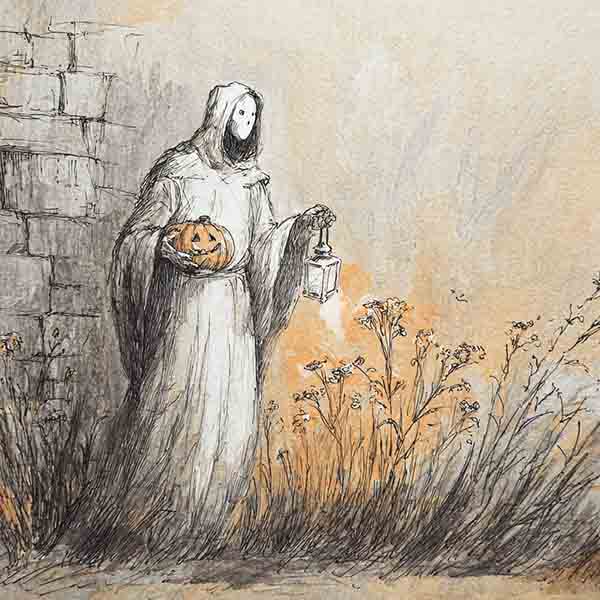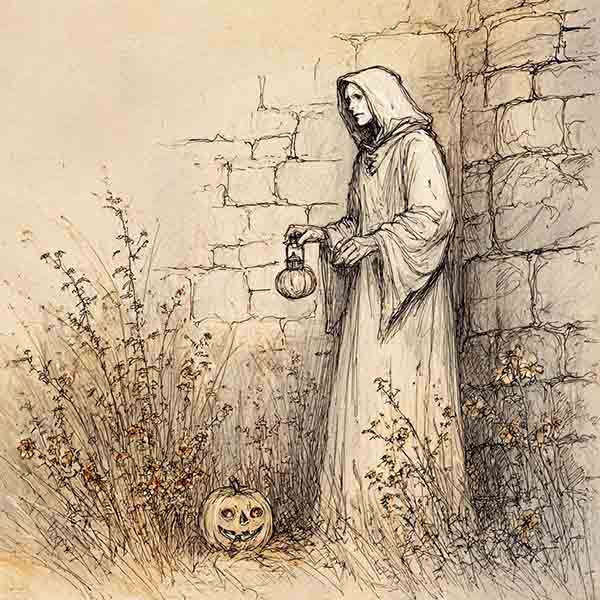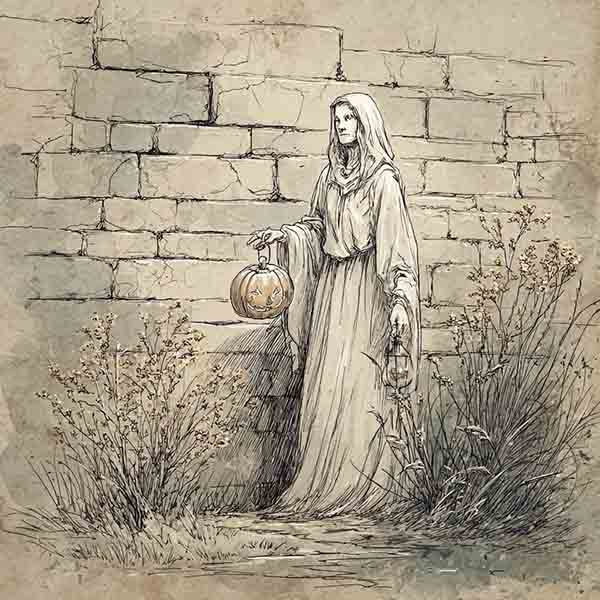Drawing a realistic Halloween ghost requires combining simplicity with atmosphere. Start by sketching a basic flowing outline of the ghost’s cloak-like figure. Unlike rigid shapes, a ghost’s form should look loose and fluid, as if it’s drifting in the wind. Use long, sweeping pencil strokes to suggest folds in the fabric, adding depth and movement.

Focus on the hood or head area by leaving it shadowed and featureless—this creates an eerie, faceless effect that feels both mysterious and unsettling. To make the ghost more realistic, add shading within the folds, using darker tones in the deeper creases and lighter strokes where the fabric catches light. Cross-hatching or smudging can help create texture.
Adding details to the setting will elevate the ghost’s presence. For example, place it near an old stone wall, lantern in hand, or surrounded by dry autumn plants and a pumpkin to heighten the Halloween mood. The contrast between the ghostly white drapery and the earthy background details makes the figure stand out dramatically.
The key to a realistic Halloween ghost drawing is balance—simple, flowing lines for the figure, paired with atmospheric details that tell a story. With practice, your ghost will feel hauntingly alive on paper.



